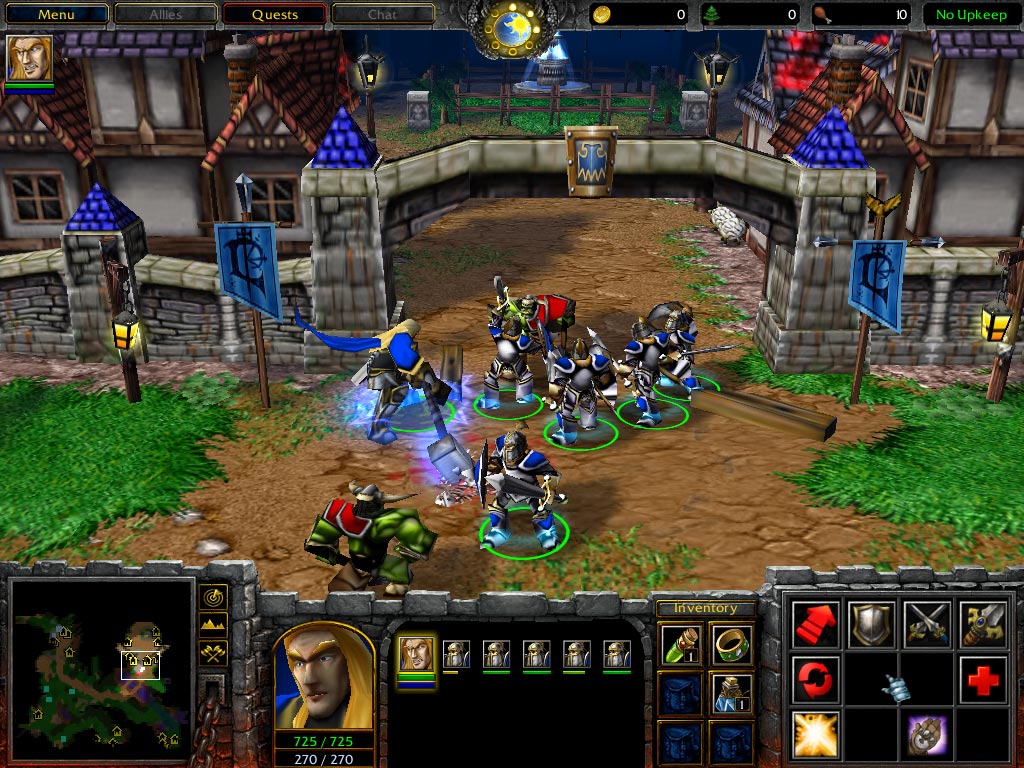The massively multi-player online role-playing game called World of Warcraft (WoW), which began in the year 2004, is still a phenomenon for the current online gaming community, creating a new turn of tide in the world wide web as a game. Describing its features such as its gameplay mechanics, expansions and community, World of Warcraft has significantly contributed to current gamming and pop culture practices.
Game Mechanics
Creating Characters
Players begin with their character, choosing from races and classes. The races are split into two major factions: Alliance and Horde. Every race has special abilities, and the classes are a mixture of different play styles-tanking, healing, and damage.
Progression System
WoW has a strong progression system. Players level up through the completion of quests, killing enemies, and engaging in other activities. Characters unlock new abilities, talents, and gear with experience to customize and specialize.
Quests and Storytelling
Quests are the core of WoW, providing the players with storyline-driven experiences. The game is very rich in lore, where the stories are interwoven into quests, which speak of the history of Azeroth, its people, and its wars and conflicts. Some of the important events that shape the world of Warcraft are the War of the Ancients and the Lich King saga.
Social Interaction
The key strength of WoW is in community. Players can create parties and join guilds. Community contributes much to the gaming experience: it fosters friendships, collaboration, and cooperation in raids and battlegrounds-places that require teamwork and communication.
Expansions and Evolution
WoW has had several expansions that enriched the game and expanded the universe:
The Burning Crusade (2007): Introduced the broken world of Outland and two new races: the Blood Elves and the Draenei. It set the stage for all the lore and gameplay mechanics that followed.
Wrath of the Lich King (2008): Focus was on the continent of Northrend and the story of the Lich King, Arthas Menethil. It introduced the Death Knight class and took the game’s narrative depth up several notches.
Cataclysm (2010): Refacings much of the old world with new zones and radical reshaping of Azeroth. The level cap is raised to 85 in this expansion.
Mists of Pandaria (2012): The game introduces the Pandaren race and Monk class and explores Eastern themes and aesthetics and philosophies within that context, as well as exploring harmony vs conflict.
Warlords of Draenor (2014): It took the players to a different universe version of Draenor and made a great emphasis on the Iron Horde. It introduced crucial graphical updates along with the new garrison system.
Legion (2016): Returned to fight against the Burning Legion and added the Demon Hunter class with the Broken Isles. Legion rejuvenated the game’s narrative and gameplay due to its abundant content.
Battle for Azeroth (2018): The expansion emphasized conflict in Alliance-Horde relations, while unveiling new continents and allied races. The expansion expanded more into the political and social stories of the game.
Shadowlands (2020): This expansion delved into the afterlife realms. New gameplay systems were implemented along with the Covenant system that enabled players to align themselves with different factions for certain abilities.
Dragonflight (2022): This expansion focused on Dragon Isles, introducing the new race, Dracthyr, and the new class, Evoker; it focused on exploration and adventurous themes.
Cultural Impacts
WoW inspired novels, comics, a feature film, and much else besides. The lore and history of the game contribute to modern fantasy culture, providing influence for other games as well as media.
Community Events
The WoW community has put together many events, like charity drives and fan conventions such as BlizzCon, where they celebrate the game and the players. These meetups give fans a feeling of belonging and community.


Esports and Competitive Play
Though WoW is primarily a PvE game, the PvP aspects have led to competitive play. Arena tournaments and battleground competitions have emerged with the best players and guilds.
Features World of warcraft 3
- Epic Storyline: Immerse yourself in a rich narrative filled with lore and character development.
- Diverse Races and Classes: Choose from multiple races and classes, each offering unique abilities and playstyles.
- Cooperative Gameplay: Team up with friends to conquer quests and challenges.
- Stunning Graphics: Experience beautifully designed environments and character models.
- Vibrant Community: Engage with a large player base through guilds, forums, and in-game events.
- Regular Updates: Enjoy new content and patches that keep the game fresh.
- Customizable Characters: Tailor your characters to fit your playstyle with various skills and gear.
- PvP and PvE Modes: Engage in player-versus-player battles or team up for player-versus-environment challenges.
- In-Game Events: Participate in seasonal events that add unique rewards and experiences.

Technical Specifications of World of warcraft 3
- Version: 1.32.1
- Interface Language: English
- Designed by: Blizzard Entertainment
- Type of Game/Software: MMORPG/Real-Time Strategy
- Audio Language: English
- Uploader / Repacker Group: Codex
- File Name: WoW3_Setup.exe
- Download Size: 30 GB

System Requirements for PC and MacBook
For PC
- OS: Windows 10 (64-bit)
- Processor: Intel Core i5-3450 / AMD FX 8300
- Memory: 4 GB RAM
- Graphics: NVIDIA GeForce GTX 760 / AMD Radeon RX 560
- DirectX: Version 11
- Network: Broadband Internet connection
- Storage: 30 GB available space
For MacBook
- OS: macOS 10.12 (Sierra) or higher
- Processor: Intel Core i5
- Memory: 4 GB RAM
- Graphics: NVIDIA GeForce GT 750M / AMD Radeon R9 M290
- Network: Broadband Internet connection
- Storage: 30 GB available space

